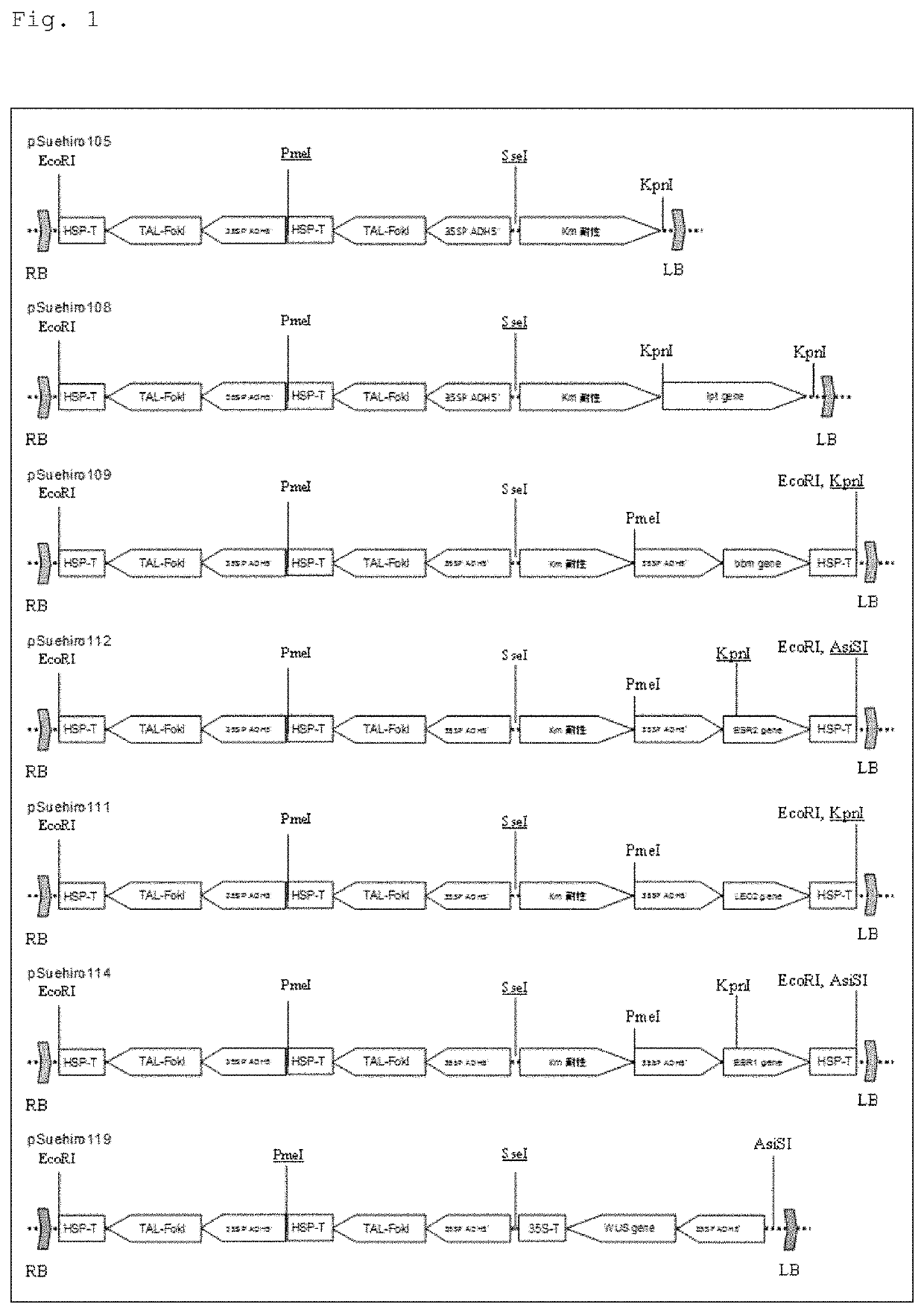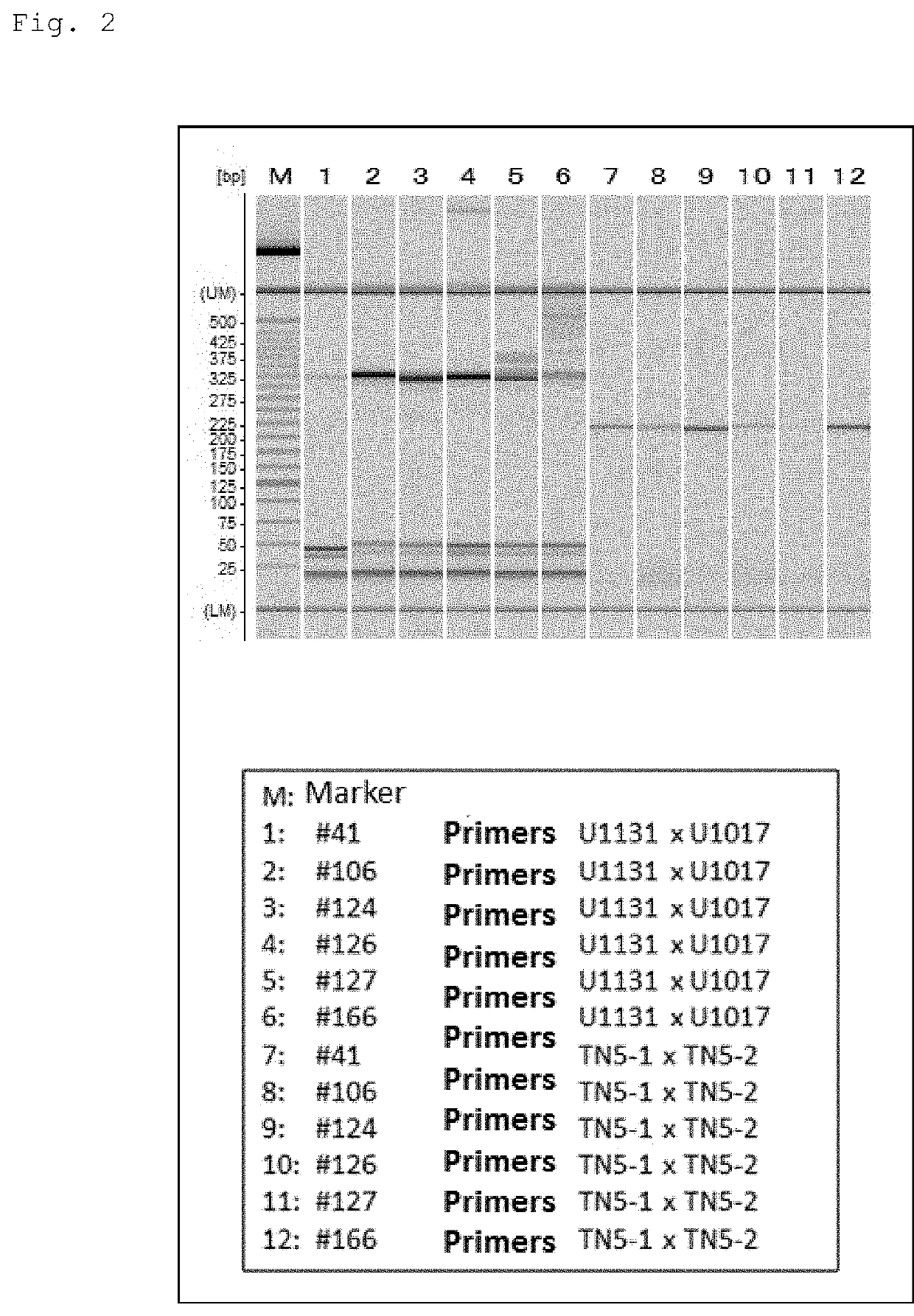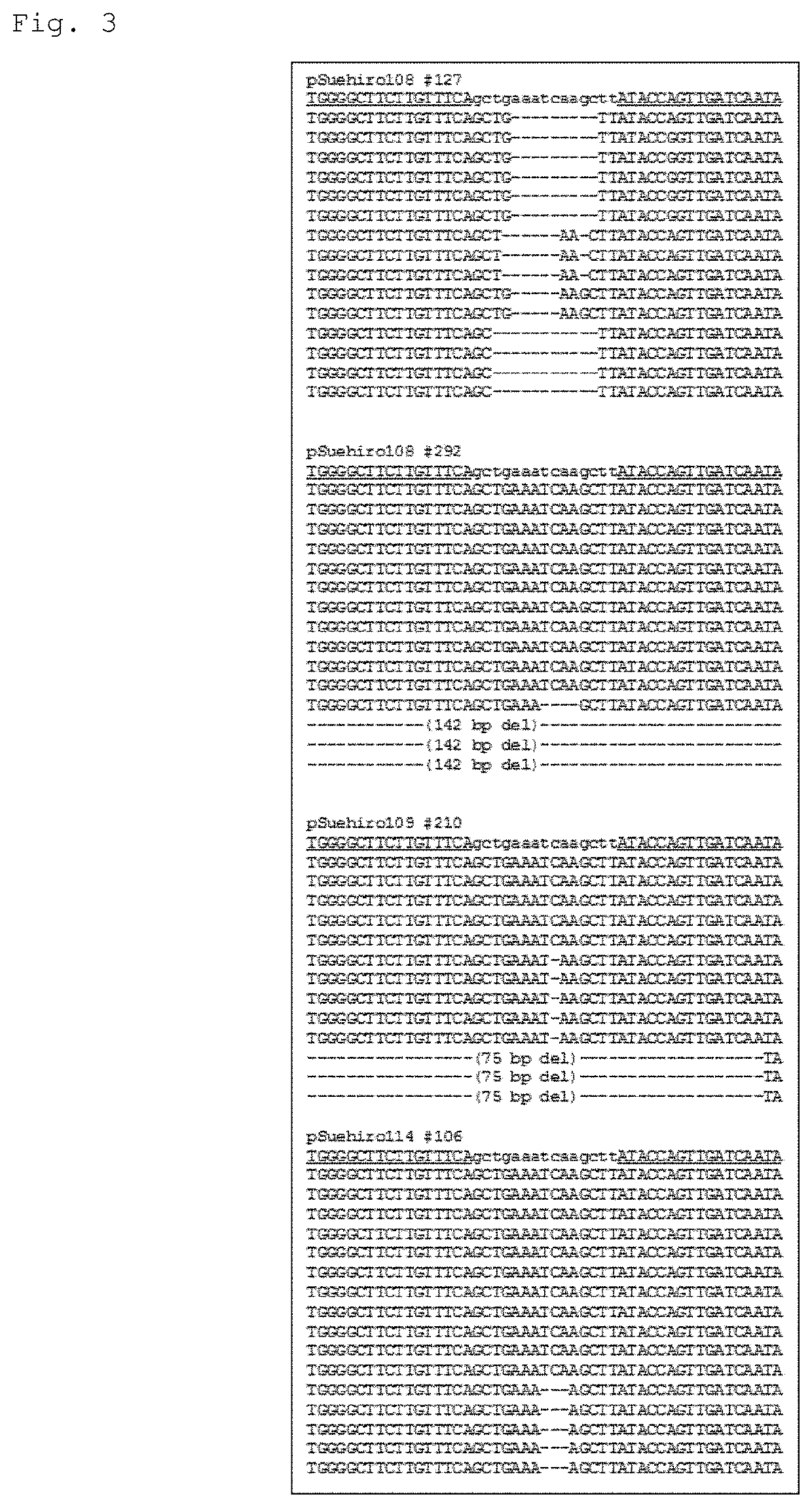Genome-edited plant production method
a genome-edited plant and genome technology, applied in the field of genome-edited plant production methods, can solve the problems of not being able to report on the order of utilizing these genes, not being able to remove the gene of the genome editing enzyme incorporated in the genome by hybridization, and not being able to achieve the effect of maintaining the identity of the cultivar
- Summary
- Abstract
- Description
- Claims
- Application Information
AI Technical Summary
Benefits of technology
Problems solved by technology
Method used
Image
Examples
example 1
(Example 1) Construction of Genome-Edited Plants Using Ipt Gene
(1) Construction of Vectors Containing Ipt Gene
[0087]A gene was amplified by performing PCR (30 cycles, using PrimeStar of Takara Bio Inc.) at an annealing temperature of 55° C. using primers U1126: CACCGGTACCCGTTACAAGTATTGCACGTTTTGT (SEQ ID NO: 1) and U1127: GGATCCATCGATTAAGTGATTATCGAACG (SEQ ID NO: 2) synthesized based on the sequence (ACCESSION X17432) of the ipt gene, which is registered in the DDBJ, with the DNA (U.S. Pat. No. 3,905,607) of the Agrobacterium tumefaciens A281 strain as a template. This gene was cloned into the pENTR / D-TOPO vector (Thermo Fisher Scientific) to obtain gene fragments.
[0088]A plant transformation vector pSuehiro108 was prepared by binding the 35S RNA promoter (35SP) of cauliflower mosaic virus, the 5′ untranslated sequence (ADH5′) of Arabidopsis thaliana, the dimer of platinum TALEN targeting the SSR2 gene of potato (two types of TAL-FokI), and the Arabidopsis HSP gene terminator (HSP-T)...
example 2
(Example 2) Construction of Genome-Edited Plants Using Bbm Gene
(1) Construction of Vectors Containing Bbm Gene
[0097]A gene was amplified by performing PCR (30 cycles, using PrimeStar of Takara Bio Inc.) at an annealing temperature of 55° C. using primers U1145: CACCTCTAGAATGAATCAAACCCAACGTTGG (SEQ ID NO: 7) and U1146: CTAAGTGTCGTTCCAAACTGAAAAC (SEQ ID NO: 8) synthesized based on the sequence (ACCESSION NM_001343497) of the bbm gene, which is registered in the DDBJ, with the cDNA synthesized from all the RNA extracted from the premature seed of Arabidopsis thaliana (ecotype Columbia) (provided by Riken, Keiko Sakakibara senior research scientist) as a template. This gene was cloned into the pENTR / D-TOPO vector (Thermo Fisher Scientific) to obtain gene fragments. A plant transformation vector pSuehiro109 was prepared by binding the 35S RNA promoter of the cauliflower mosaic virus, the 5′ untranslated sequence of Arabidopsis thaliana, the bbm gene, and the Arabidopsis HSP gene terminat...
example 3
(Example 3) Construction of Genome-Edited Plants Using ESR2 Gene
[0102](1) Regeneration Promotion and Construction of Vectors Containing ESR2 Gene, which is Negative Selection Marker Gene of Transformant
[0103]Since the ESR2 gene has no intron for all the genomes extracted from the plant of Arabidopsis thaliana (ecotype Columbia), a gene was amplified by performing PCR (30 cycles, using PrimeStar of Takara Bio Inc.) at an annealing temperature of 55° C. using primers U1157: CACCTCTAGAATGGAAGAAGCAATCATGAGACT (SEQ ID NO: 9) and U1158: CTAATAATCATCATGAAAGCAATACTGA (SEQ ID NO: 10) synthesized based on the sequence (ACCESSION NM_102301) registered in the DDBJ. This was cloned into the pENTR / D-TOPO vector (Thermo Fisher Scientific) to obtain gene fragments. A plant transformation vector pSuehiro112 was prepared by binding the 35S RNA promoter of the cauliflower mosaic virus, the 5′ untranslated sequence of Arabidopsis thaliana, the gene, and the Arabidopsis HSP gene terminator, utilizing re...
PUM
| Property | Measurement | Unit |
|---|---|---|
| temperature | aaaaa | aaaaa |
| pH | aaaaa | aaaaa |
| concentrations | aaaaa | aaaaa |
Abstract
Description
Claims
Application Information
 Login to View More
Login to View More - R&D
- Intellectual Property
- Life Sciences
- Materials
- Tech Scout
- Unparalleled Data Quality
- Higher Quality Content
- 60% Fewer Hallucinations
Browse by: Latest US Patents, China's latest patents, Technical Efficacy Thesaurus, Application Domain, Technology Topic, Popular Technical Reports.
© 2025 PatSnap. All rights reserved.Legal|Privacy policy|Modern Slavery Act Transparency Statement|Sitemap|About US| Contact US: help@patsnap.com



